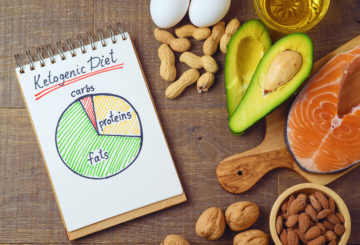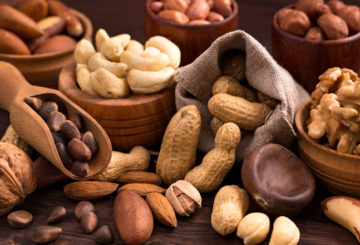Here are the top 10 functional and practical food trends this year:
Specialty nutritionals. Nearly nine in ten adults made a strong effort to consume more nutrients, vitamins, minerals, herbs and botanicals and include more fish, oil, omega-3s in their diets. This is completely different to how most consumers relied heavily on nutritional supplements way back. Now, consumers are switching to fortified and functional foods. Also, consumers are prioritizing maintaining a healthy digestive system and immune health, which probiotics is playing a key role in 2014.
Natural Ingredients. Six in 10 consumers look for ingredients that are recognizable while shopping. They search for food that are simple, real and contains natural ingredients. Over half of consumers search for foods that do not contain artificial ingredients. One quarter of adults buy organic foods and beverages. The increase in numbers, show that the majority of consumers hugely like the idea of getting their nutrition from foods that contain naturally occurring health benefits.
Hispanic Health. In 2012, America’s 52 million Hispanic spent an estimated $6.9 billion on functional food and $9.4 billion on natural and organic foods and drinks. This group is also the number one users of energy drinks and shots, sports beverages and 100 percent juice drinks. Their general population spend twice as much to look whatever it takes to look younger and are commonly the first to try a new health food, nutritional product or diet.
The Protein Market. The protein evolution is still the center stage among market consumers, with 57 percent of consumers within the age of 18 to 34 and above age 65, looking for protein sources. Consumers are relying on protein sources to maintain healthy bones and joints, strengthen their immune systems, and build muscle strength and tone while still maintaining their energy all through the day.
Kid-Friendly Foods. Half of America’s 32 million moms who say that they always consider purchasing health foods and drinks for their kids are searching for a wide range of healthy, convenient, kid-friendly foods and drinks that contain nutrient and calorie levels particular to the needs of their kids. 44 percent of children under the age of 12 consume organic foods and drinks at least once a week. Moms are less likely to search out for organic food for their children as they age.
Pharma Foods. Research shows that eight to ten consumers believe that functional foods can prevent or delay the possibility of heart disease, hypertension, osteoporosis and Type 2 Diabetes. Six in ten consumers connect it with benefits linked to age-related memory loss, cancer and Alzheimer’s disease. In 2013, 56 percent of consumers purchased foods and beverages that focused mainly on specific conditions while cholesterol-lowering foods and drinks were the most purchased condition-specific food or drink.
Substitutes. There is a growing percentage now with eighty percent of households that eat meatless meals for dinner. With eggs as the most popular substitute followed by beans, lentils, and legumes. Dairy-free milks that include soy, rice and almond ranked fifth and coconut water ranked eighth among non-alcoholic alternatives in restaurants for 2014.
Performance Nutrition. Performance nutrition not only focuses on athletes and bodybuilders, but they also focus on people participating in recreational sports, casual athletes and gym exercisers. Nearly six in ten adults used a sports nutrition product in 2012. The sales of sports nutrition supplements, nutrition bars, and energy drinks when combined, topped $24 billion in 2012, up 11.2 percent. This category is extremely played by kids, with three-quarters of kids between the ages of six-11 and 71 percent of teens ages 12-17 using sports drinks. Some moms are using sports nutrition powders for their children while half of the protein drink users think that consuming protein drinks allow them to perform better during exercise.
What Most Think. Consumers wanting to shed a few pounds have now changed their focus on deprivation-style weight loss campaigns. Instead, more and more consumers are just eating healthier while adding specific real food components and nutrients to their diet. On the top of the list of ingredients that two-thirds of those who added them to their diet are whole grains, fiber, and vitamin D. Others added more calcium, protein, antioxidants, or omega 3/fish oil. 60 percent of adults agree that protein works for weight loss while one-third believe protein boosts metabolism and helps in burning fat.
Gen Zen. People between the ages of 14 and 33 (Millennials) think that their food choices are healthier, more expensive, more natural and organic, less processed, better tasting and fresh. This group of people also believes that some functional foods and beverages can also be used as substitute of some medicines to ease tiredness and lack of energy, maintain mental sharpness with aging, stress and eye health. Millennials and Gen Xers are commonly involved in reading nutrition labels for calories, vitamins and minerals, serving size and protein, and the likes. They also drink a wider range of beverages that include ready-to-drink coffees and sparkling drinks.



